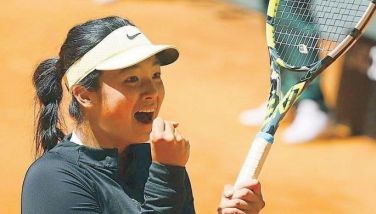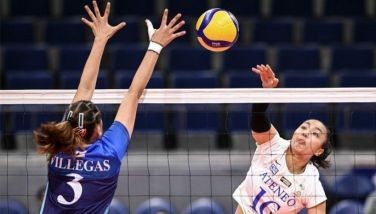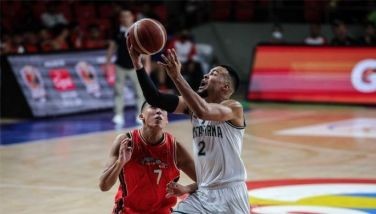The meaning of Gilas

Gilas head coach Chot Reyes delivered an inspiring talk before over 1,000 participants of the sixth annual NBTC (National Basketball Training Center) Coaches Convention at the Ynares Sports Arena in Pasig last Monday and mesmerized his audience with the story of how he metamorphosed from coaching Ateneo high school kids in 1981 to coming out of retirement to return to Gilas this year with only service to the country in mind.
Reyes, 54, played for the Blue Eagles and coached the Loyola varsity until he moved to the PBA first as coach Tim Cone’s assistant at Alaska in 1990. In 1993, Reyes took over the Coney Island reins and became the youngest head coach at 29 to win a PBA title after steering the Purefoods franchise to the All-Filipino crown. That was the first of eight championships Reyes bagged in the pro league, the last with TNT in the Philippine Cup in 2011-12. He’s a five-time PBA Coach of the Year, a recognition of his performance throughout his career in the league.
This is Reyes’ third tour of duty with Gilas as head coach. He was at the helm in 2005-07 and 2012-14 before reassuming the hot seat this year. Reyes is in the record books as the man who brought the Philippines back to the FIBA World Cup in 2014 after a 36-year absence and booked the Philippines’ first win in the competition after 40 years. He piloted Gilas to a second place finish at the 2013 FIBA Asia Championships, beating South Korea in the semifinals, to claim the ticket to the 2014 FIBA World Cup in Spain.
After the Philippines went winless in two games at the FIBA Olympic Qualifying Tournament here last year, Reyes was asked to take over from Tab Baldwin as head coach. There was no compensation in the equation. Reyes was secure in his position as president/CEO of TV5 and surely didn’t need the added stress. But he couldn’t turn his back on the country and SBP chairman emeritus Manny V. Pangilinan whose passion for the game is fuelled by the drive to bring honor to the flag.
“Players win games, coaches lose games,” said Reyes, reiterating the adage that coaches always take a back seat to players in winning championships. But despite the stress that goes hand-in-hand with coaching, Reyes said the gratification is the opportunity to mold young men and women into citizens of substance in the future.
Reyes said to him, GILAS is an acronym for Growth, Innovation, Longevity, Adversity and Service. He said those five elements summarize the story of Gilas. In growth, Reyes said it’s about the willingness to do things differently, to be creative in pushing oneself to the next level. He referred to Miami Heat coach Erik Spoelstra’s favorite book “Mindset” by Carol Dweck in distinguishing between a growth mind-set and a fixed mind-set. Reyes encouraged coaches to invest in learning aids like books, seminars and videos. “Don’t be afraid to spend,” he said. “It’s more expensive when you’re not learning to grow in your career.” Reyes also said learning to communicate effectively is a must because if a coach isn’t able to share what’s in his head to his players, the knowledge will go to waste.
In innovation, Reyes said basketball technology is constantly evolving so that coaches must always keep up-to-date with the latest developments. He said the late Ron Jacobs was his first idol and learned motion offense from him. Then came Cone with his triangle offense of which he became a disciple. When he coached Gilas at the 2007 FIBA Asia Cup, neither the motion offense nor the triangle offense was the system of choice. Reyes went to the dribble drive offense. And today, he’s developed a uniquely Filipino-style “bara-bara” approach that borrows elements from different systems and leaves opposing coaches wondering how to deal with what appears to be an unstructured set-up.
In longevity, Reyes spoke about the value of familiarity and playing together. He pointed to Argentina’s long-time nucleus of Luis Scola, Manu Ginobili, Andres Nocioni and Carlos Delfino as a key factor in keeping the national team competitive through the years. Reyes said building the core from when players were 17 is a formula for success. In adversity, he said what’s more important than IQ is AQ or adversity quotient, the ability to overcome adverse conditions. Reyes recalled Gilas’ preparations for the recent FIBA Asia Cup where the national team had only five days of practice and only once with a complete cast.
- Latest
- Trending































